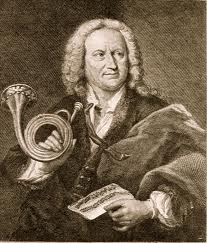As part of his vast output of vocal and orchestral works, Bach wrote four orchestral suites (or “ouvertures”), probably between 1724 and 1739. They are based on the 18th-century “French style” of overture – a slow opening section with a faster middle section, followed by a variety of dance movements.
Bach’s Fourth Suite is brilliantly scored for trumpets, oboes, timpani and strings, and features all of these forces in its scope.
From the Performance of Fall, 2017.
Ouverture
Bouree I and II
Gavotte
Menut I and II
Rejouissance
It begins with a magnificent overture, followed by a lively fugue in 9/8 time showcasing Bach’s mastery of counterpoint, concluding with the stately opening procession.
The following four dance movements are diverse, each showcasing different sections of the orchestra. Trumpets, oboes and bassoon feature in the lively Bourrée and robust Gavotte; woodwinds and strings combine in an elegant Menuet, with a middle section scored for solo strings.
The Suite ends with a rousing Réjouissance (literally, rejoicing or celebration) featuring the entire ensemble.
Suite No. 4 in D Major
BWV 1069
By Johann Sebastian Bach






